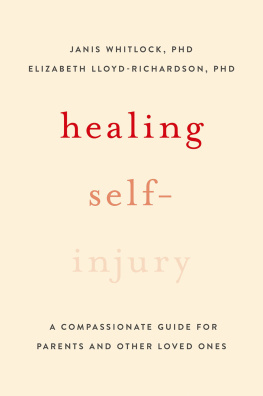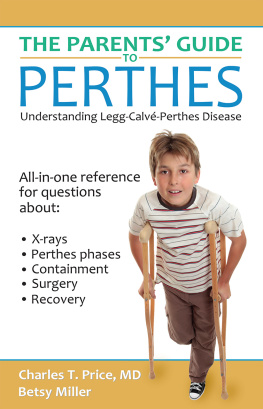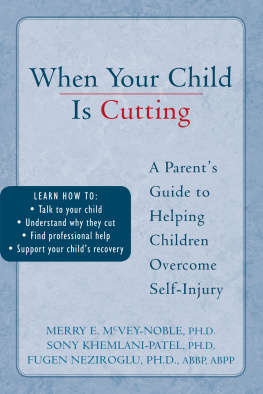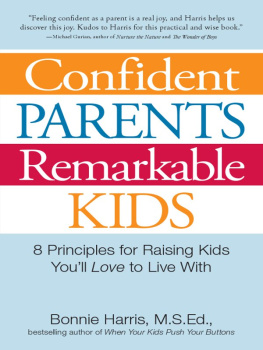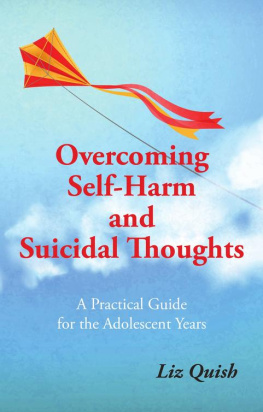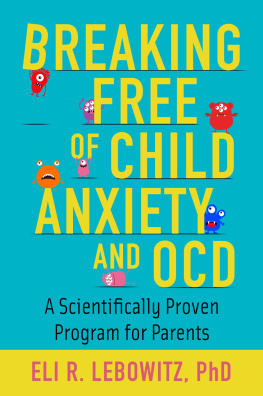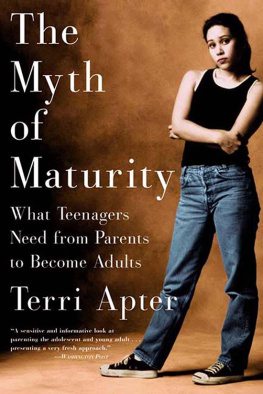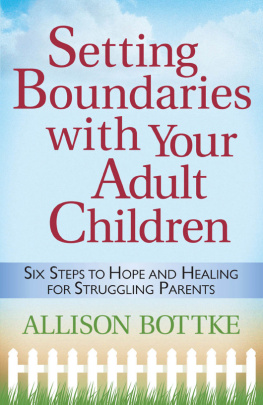Advance Praise for Healing Self-Injury
Whitlock and Lloyd-Richardson have produced a book that is rigorous, accessible, engaging and full of practical guidance. They lay out a clear and comprehensive foundation to help families understand how self-injury develops, what it means, how it can be treated, and finallyand maybe most importanthow young people and families can emerge from this problem with more insight and inner strength, and with stronger connections. I highly recommend this work for anyone seeking a deeper understanding of this complex and vexing phenomenon.
Victor Schwartz, MD, Clinical Associate Professor of Psychiatry, NYU School of Medicine, and Chief Medical Officer, The Jed Foundation
Drs. Whitlock and Lloyd-Richardson, experts in the field of self-injury, have produced a book that is equal parts evidence-based, empathic, and actionable. Self-injury need not be more frightening and confusing than other problems facing adolescents. I highly recommend this guide to parents seeking to better understand and help with their childrens self-injury.
E. David Klonsky, PhD, Professor of Psychology, University of British Columbia
A must-read for anyone who knows a self-injuring teen! This beautifully written and extraordinarily well-informed guide offers comfort, explanations, and a detailed plan for parents of adolescents suffering from one of todays most troubling and dangerous risky behaviors. Whitlock and Lloyd-Richardson are national experts on self-injury who have translated the science into a remarkably accessible and essential resource!
Mitch Prinstein, PhD, University of North Carolina at Chapel Hill, author of Popular: Finding Happiness and Success in a World That Cares Too Much About the Wrong Kinds of Relationships

Oxford University Press is a department of the University of Oxford. It furthers the Universitys objective of excellence in research, scholarship, and education by publishing worldwide. Oxford is a registered trade mark of Oxford University Press in the UK and certain other countries.
Published in the United States of America by Oxford University Press
198 Madison Avenue, New York, NY 10016, United States of America.
Oxford University Press 2019
All rights reserved. No part of this publication may be reproduced, stored in a retrieval system, or transmitted, in any form or by any means, without the prior permission in writing of Oxford University Press, or as expressly permitted by law, by license, or under terms agreed with the appropriate reproduction rights organization. Inquiries concerning reproduction outside the scope of the above should be sent to the Rights Department, Oxford University Press, at the address above.
You must not circulate this work in any other form and you must impose this same condition on any acquirer.
CIP data is on file at the Library of Congress
ISBN 9780199391608
eISBN 9780199391622
Contents
Why Is This Book for You?
I f you are the parent of an adolescent or young adult who self-injures or has done so in the past, this book is for you. First and foremost, we want to tell you that despite how helpless you may sometimes feel, you mattera lot. You are a critical part of what happens next. In fact, thats why we wrote this bookand if you are reading it then you may already know this, at least to some degree. Its also likely that you have some questions about what self-injury is, why people do it, and, most importantly, how to help your child, your family, and yourself.
The daily demands of life with children and the need for steadiness and vision, even in the throes of uncertainty and child discontent, is a big, big jobone that can feel very lonely at times and which can leave us feeling like we do not matter at all. In truth, however, you matter in more ways than you probably realize. From us as parents and professionals to you: You do not need to have it all figured out. Your child did not start self-injuring because you failed. You will not fail your child now if you cannot get it all right. You have time. All that really matters at this point is that you are willing to grow, stretch, and learn alongside your child.
Your child did not start self-injuring because you failed.
It is our goal to help you better understand both your childs behavior and your own reactions to it. We hope to increase awareness of patterns that subtly and perhaps not so subtly affect communication between you and your child. And we hope to help you understand the importance of self-compassion and self-care through a time that can be as hard on you as it is on your child.
Why This Book May Not Be for You
For parents of children who are on the autism spectrum or have a developmental disability, you may have picked up this book because you have a child that self-injures in relation to a long-standing disorder. This self-injury is often labeled as stereotypy or self-stimulatory behavior, and it is repetitive in nature and seen primarily in children with autism spectrum disorders, mental retardation, and developmental disabilities.16
In this book, we are primarily referring to nonsuicidal self-injury (NSSI) that is not socially visible, but is often chronic, tends to occur in youth with no other clear developmental challenges, and can come and go, sometimes with long periods of silence between episodes. This type of self-injury is commonly viewed by professionals as very different from that which is experienced by individuals with a developmental disability or on the autism spectrum. Stereotyped self-injury is likely observed by parents early in life, perhaps even as early as two to three years of age. These families may have come to some degree of equilibrium as they have learned to work around patterns of behavior and to accommodate family needs in a variety of ways. In these cases, parents typically come to understand self-injury as part of a complex spectrum of behaviors associated with their childs condition, and they would not likely find the information contained within this book to be relevant.
However, a family with a higher functioning teen on the spectrum (formerly known as Aspergers syndrome) who also engages in NSSI may benefit from the material discussed here because it may help to identify ways to develop a deeper connection and to understand what factors trigger your teens self-injury. Also important, while we rarely think about it in the same way, research shows that caregivers of youth who are experiencing emotional or psychological challenges (such as self-injury, disordered eating, or depression) experience challenges similar to those felt by caregivers of physically or developmentally disabled children or elders.
Why You Matter So Much
While we will examine some of the common family- and parentchild-related issues that may contribute to self-injury, the majority of this book focuses on life after you find out about your childs self-injury. We focus largely on the information and skills likely to assist you in supporting your childs recovery process, as well as yourself and other family members. We focus on this because it has become increasingly clear that parents are critical allies in setting the stage for recovery and thriving. We hope to illustrate how true this is from individual families stories, as well as from what we know from science and research.

